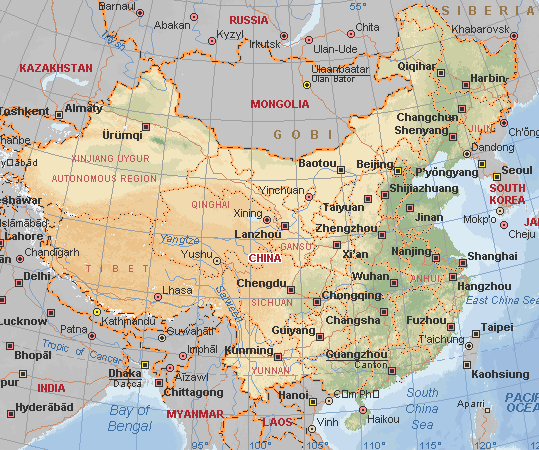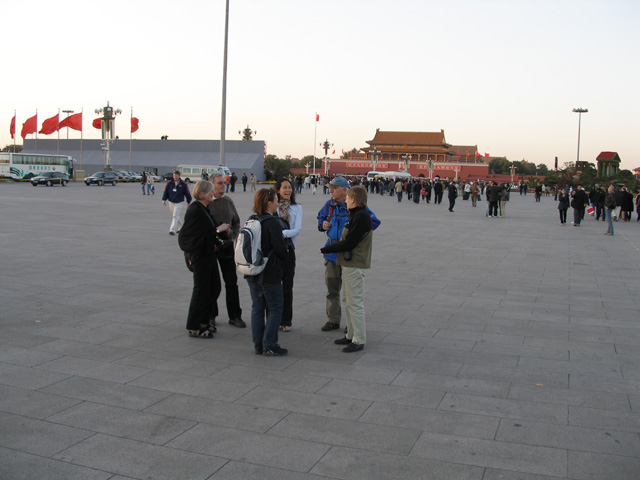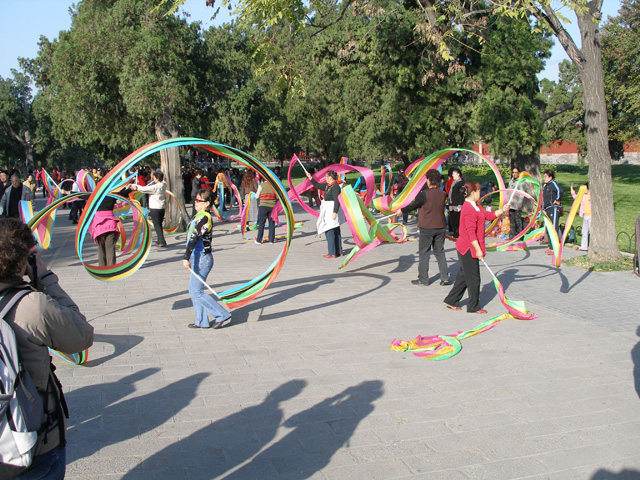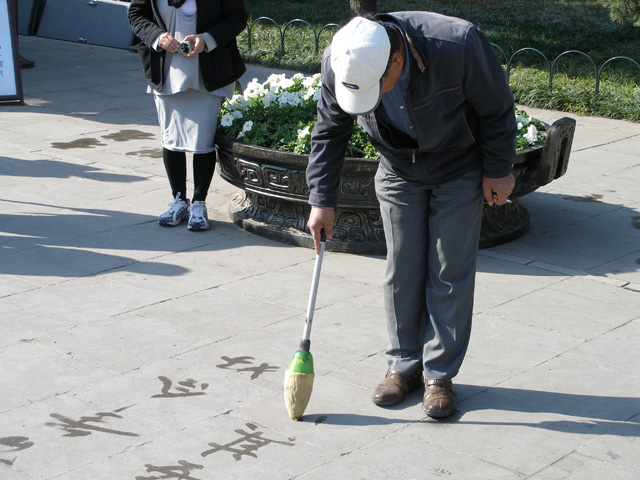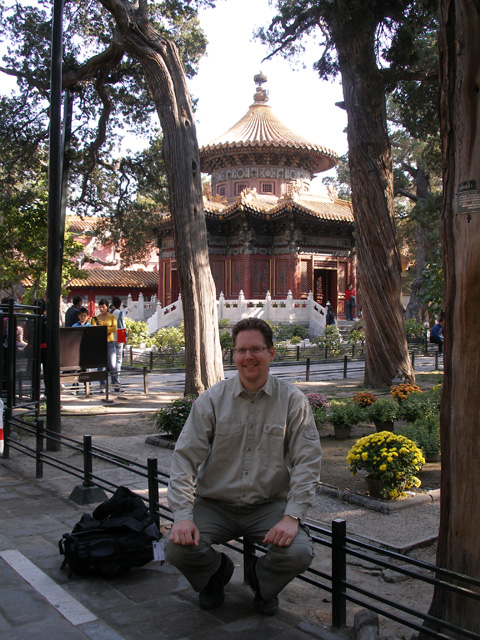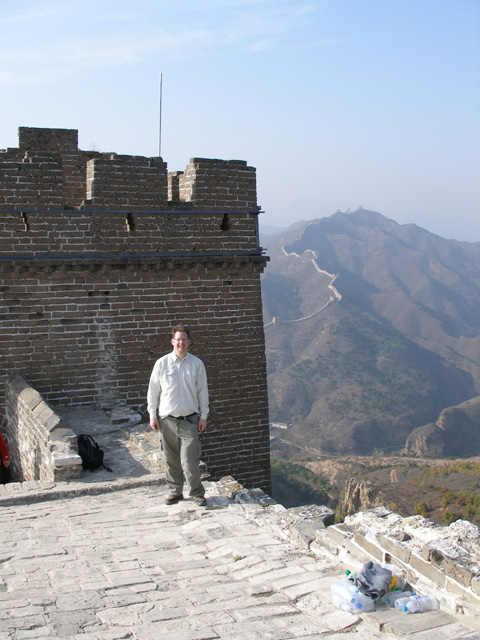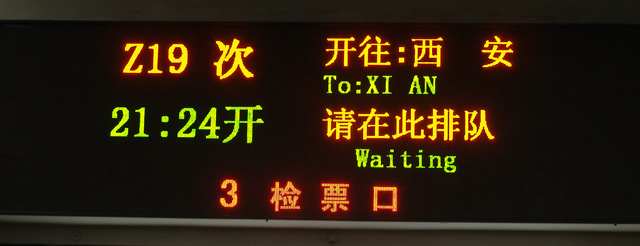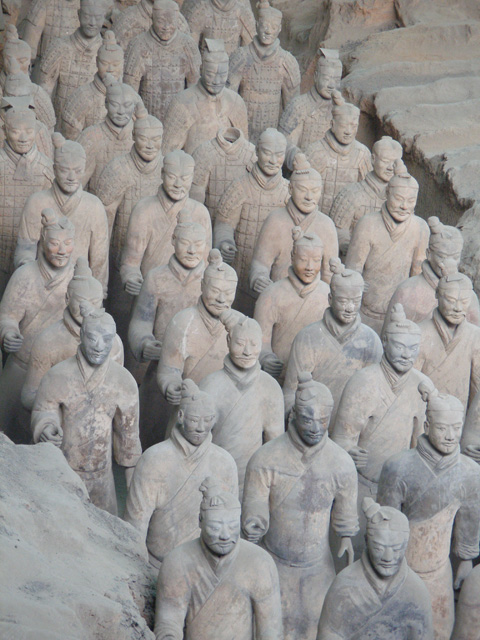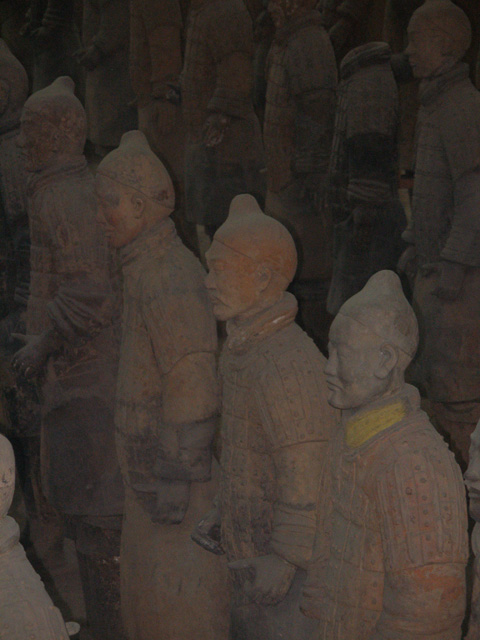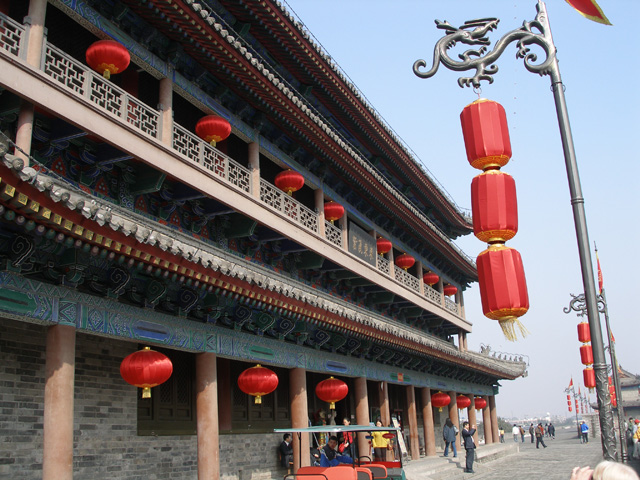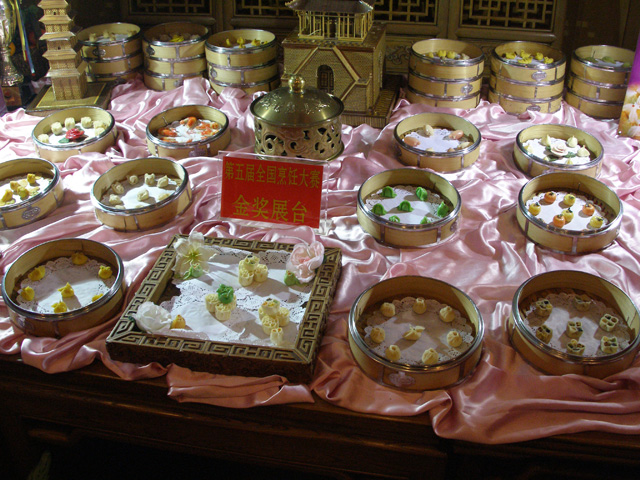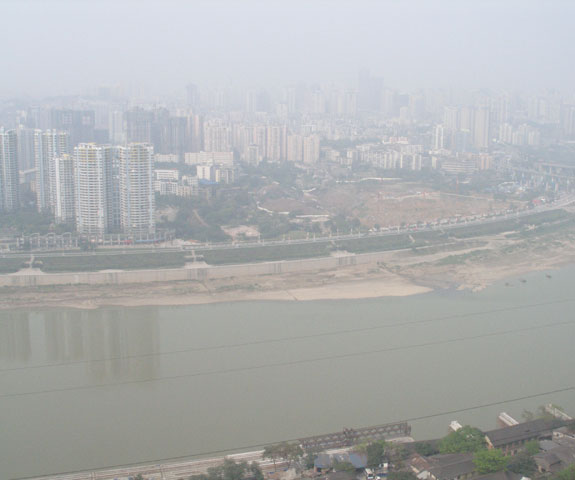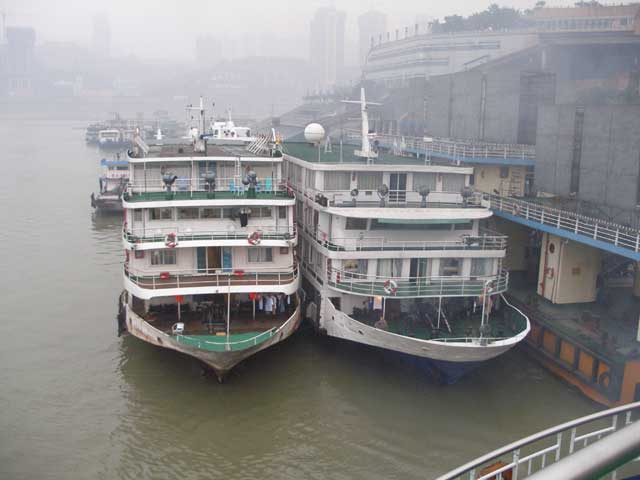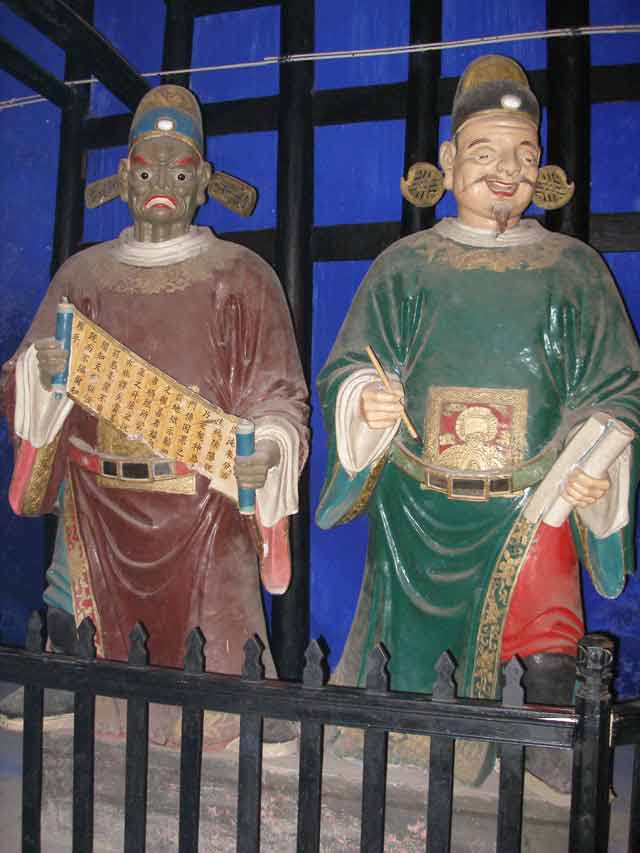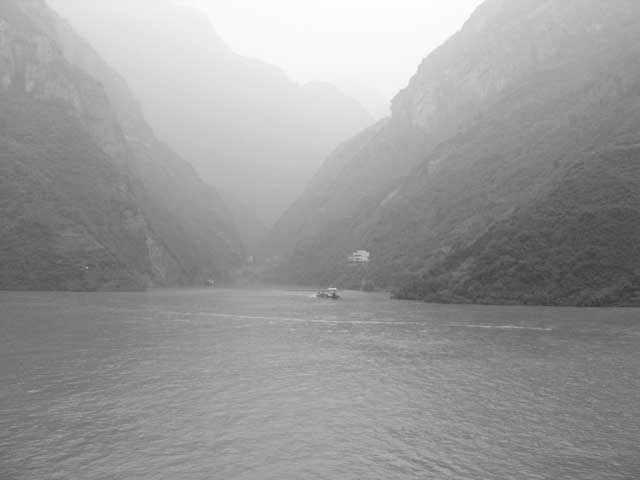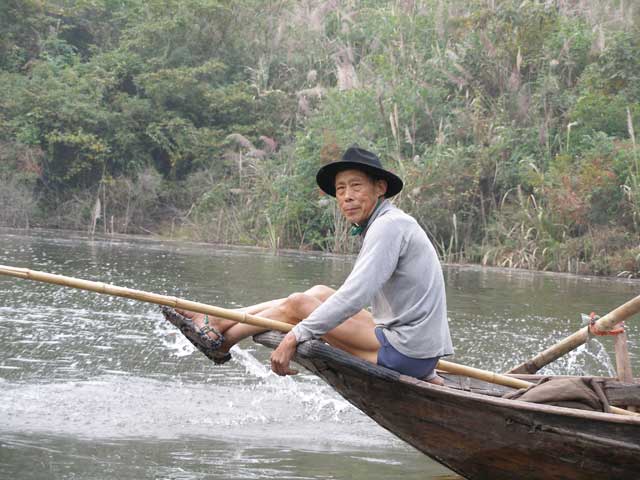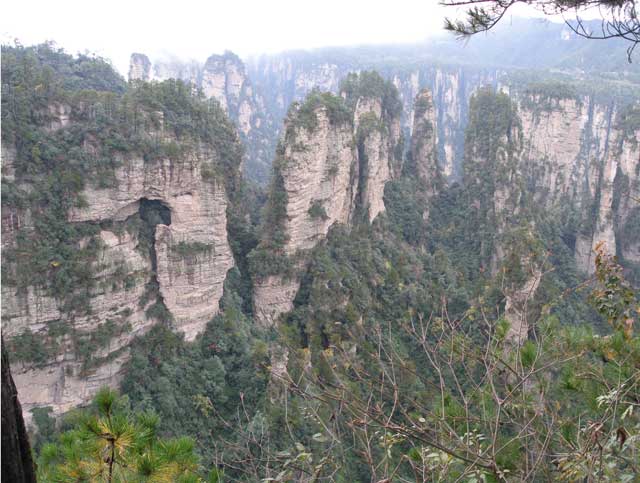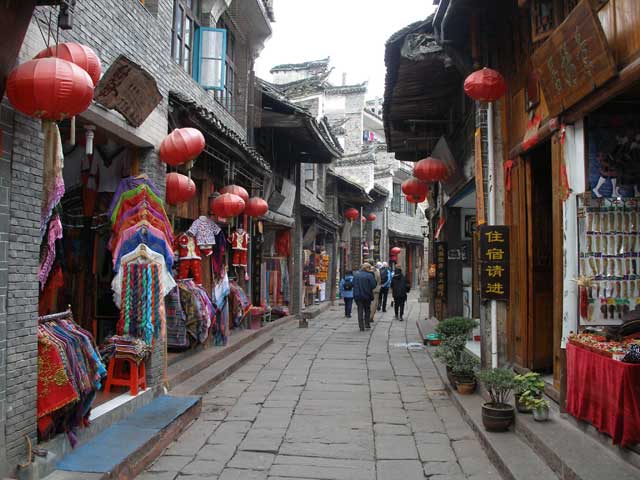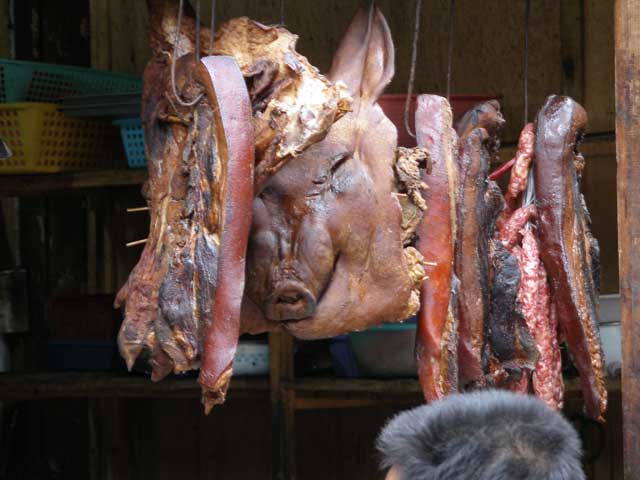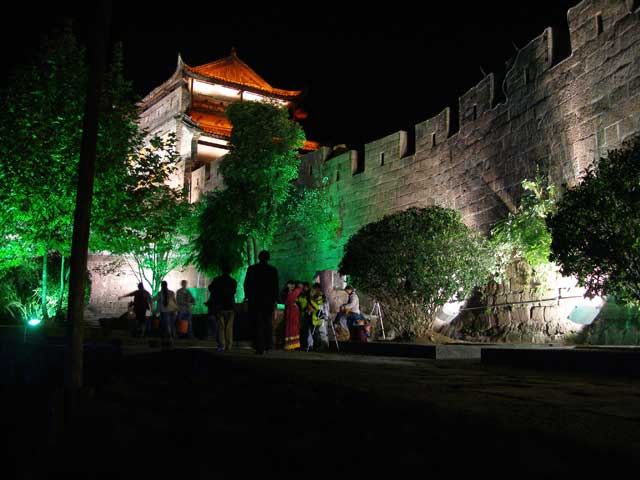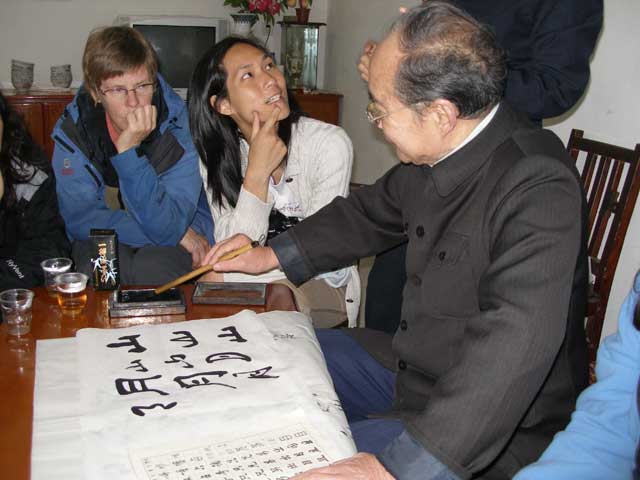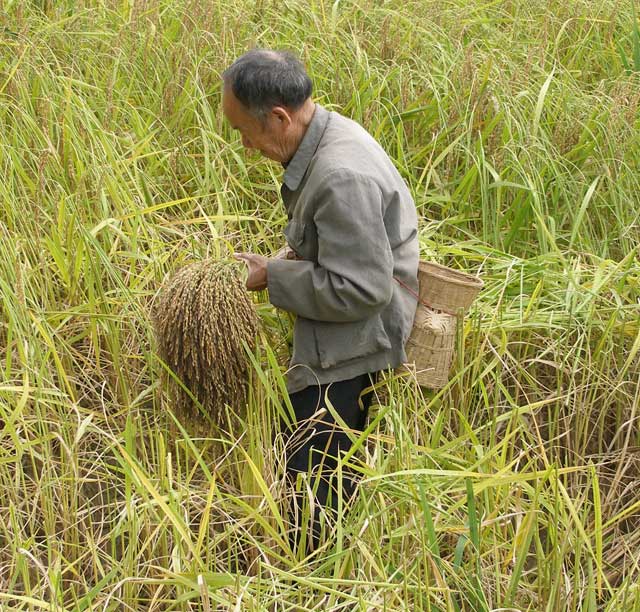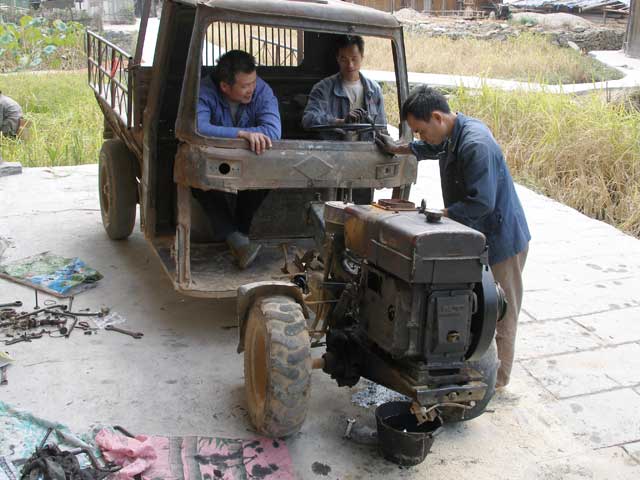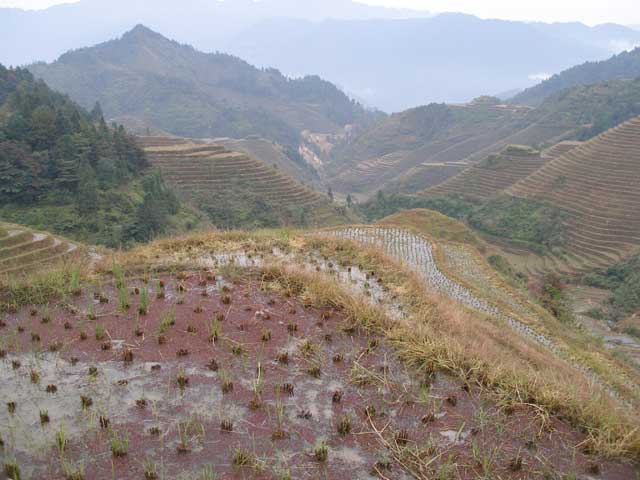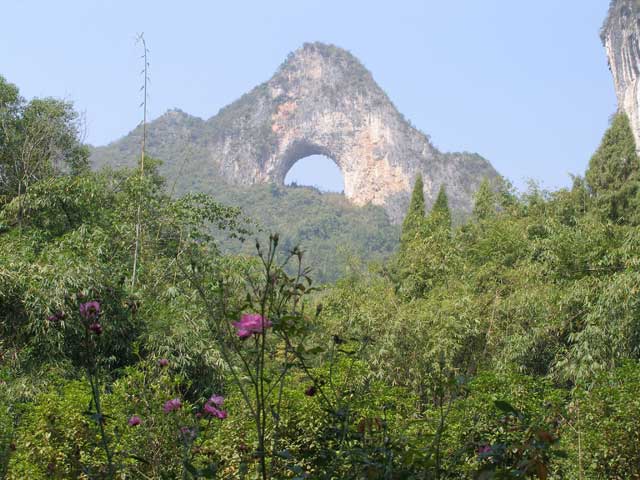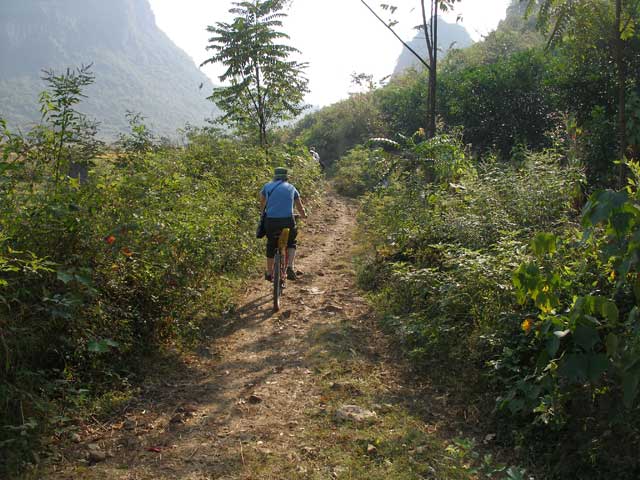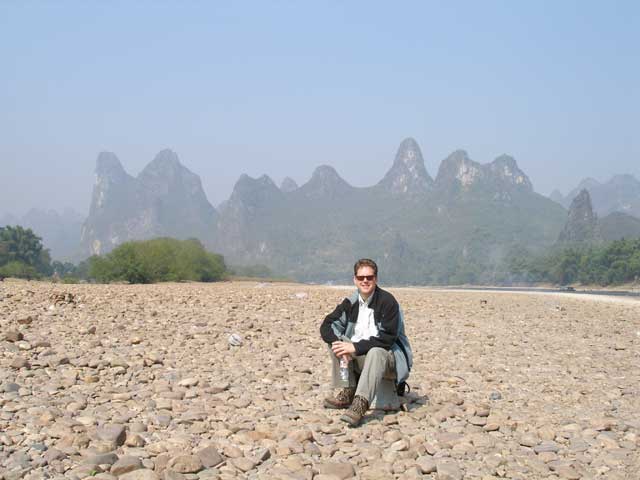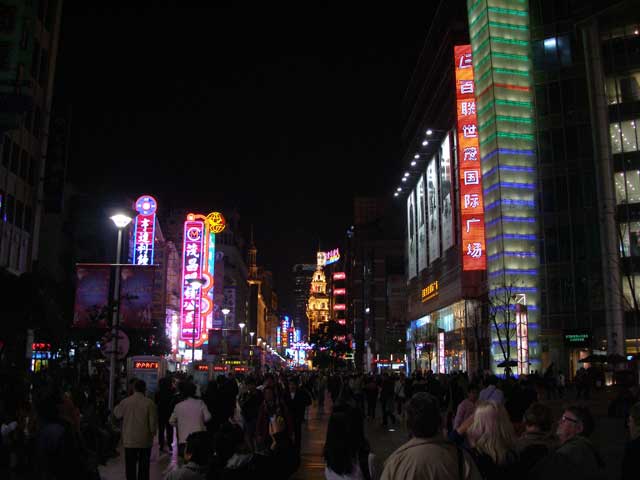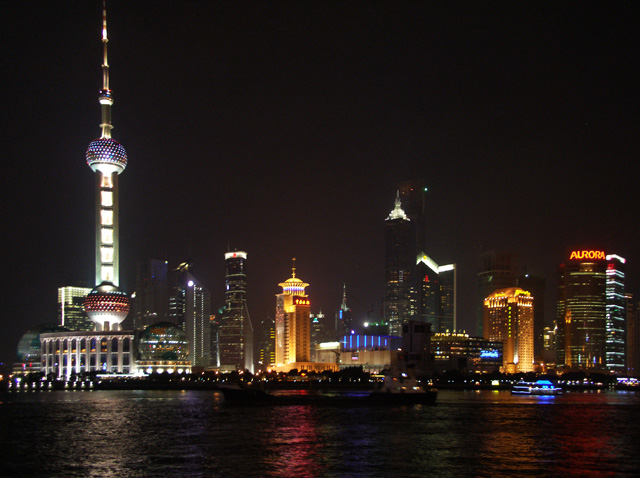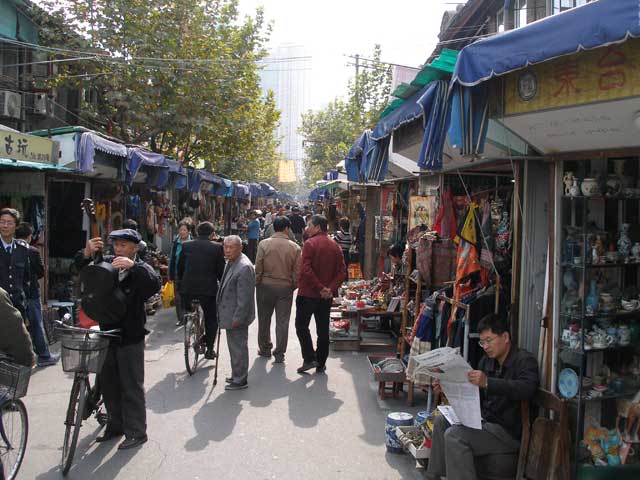China
ChinaUnlike Ethiopia which my previous trip, China is a very popular travel destination for people from all over the world. It is a huge country and its history, nature and importance as one of the major forces in the world today all contribute to its attraction. For me, it was almost three years since my Ethiopia trip and I started to feel that it was time for a new long vacation. From an early point it was clear that the destination would be somewhere in Asia. The reason for that was that I had only briefly touched the continent before. Once I had been in Singapore for a week, but Singapore although nice isn't exactly very representative for the continent. I had also been to Dubai on a business trip, but the same thing applied there. The choice stood between the counties of south-east Asia and China, and when I found a description of the "Great Wall" trip arranged by a company called Världens Resor in Stockholm I was hooked. The trip would mean that one could see the Great Wall where it ends in the desert in the west near Dunhuang, where it ends in the sea in the east and a couple of more places in between. Also one would visit Xian and the terracotta army of emperor Qin and other interesting places on the way. This group trip was planned for September 2007, but as the summer can so did some very bad news - the trip was cancelled due to too few participants. This made me very annoyed as I had prepared for the trip and that trip especially. After a week or so I started to look for other alternatives among both Världens Resor and its competitors Läs&Res and Kinaresor. The latter had travels that were a bit more expensive, better accommodation and more travelling by plane. That can be nice, but I was more after the basic and the simple since I feel that you experience more of the country that way. I had travelled with Läs&Res to both Peru and Ethiopia and I had been very satisfied with both those trips, but I couldn't find the kind of China travel that I was after this time. So in the end I decided to go with Världens Resor and a trip called "The backbone of the Dragon" (Drakens Ryggrad) in October to November 2007. They guaranteed that this trip would not be cancelled. So now I had to get over the disappointment of the first trip being cancelled and start to prepare for the new one. This one started in Beijing, continued to Xian and then to Chongqing where we would start a three day trip on the Yangtze river. Then the national park Wulingyuan, the old town of Fenghuang, walking along the terrace fields around Longji, Yangshuo and Shanghai would follow. I would be a good introduction to China according to Världens Resor. I didn't know any of the other members of the group that I was going to travel with, but I hoped for the best. Usually these things work out well, but one can never know in advance and it added a bit of extra excitement. Beijing (Peking)The travel started in 18th of October 2007. We were to be a group of 11 people, but as we came from different places in Sweden we wouldn't all meet until in Beijing. I started by getting on the train from Helsingborg to the Copenhagen airport. I got in line to the check-in counter and already then I happened to meet two of the other members of our group. We continued with Finn Air via Helsinki to Beijing, where at the airport we met more people in the group as well as our travel leader, Silvia. Beijing is the proper name of the city and it means "The northern capital" in mandarin. As there is a northern capital there must be a southern capital and that is Nanjing. As we arrived I immediately noticed the smog. It is a major problem in the city, and a week or two after we left the city they actually had to close the airport due to too poor visibility due to smog! That is really scary and makes you think once or twice extra about what we do to the environment.
Part of the group on Tiananmen Square
Lots of different morning activities in the Temple of Heaven
One of several people training calligraphy using water on the ground in the Temple of Heaven
Me in the Chinese garden in the Forbidden City We saw most of the usual places of interest in Beijing and those are mainly once with historical interest. I wouldn't want to miss those, but although I had a nice time in Beijing I didn't get fond of the city. It didn't have that friendly atmosphere that I look for in a city. One day we made a trip to see the great wall at Simatai. It was about a three hour trip one way, but was all worth it. What a marvellous achievement the Great Wall is! As it winds its way across and along the mountain ridges it gives a view that superseded the expectations that I had on it. I wish we had the time to walk a longer distance on the wall - and that I can make the original journey along the full stretch of the Wall some day.
On the great wall at Simatai XianWe left Beijing in order to go to Xian and see the terracotta army there. We took the night train, in soft sleeper class. Soft sleeper was very nice, with everything being nice, clean and comfortable. It later turned out that the difference to hard sleeper was huge...
When arriving in Xian, we immediately took a minibus out to the site of the terracotta army. It was discovered in 1974 by farmers digging a well and caused a sensation worldwide. The number of soldiers, their sizes and the details and variation of them makes this a very impressive sight. It has taken the city of Xian from being a city being almost forgotten to being a place one must see when going to China. The three sites of the army are now enclosed by buildings that protect them. An exhibition hall displays amongst other things lots of pictures of the buildings surrounding the army being build but none of the original well or the excavation of the army itself. They sometimes have strange priorities, the Chinese! Many tourists that come to see the terracotta army seem to rush through it. Don't! Take your time and enjoy it all. We asked our travel leader for a bit of extra time, but even with that we had less time than would have been optimal.
Pictures of the terracotta army that guards emperor Qins tomb outside Xian There are other things to see in Xian than the terracotta army. The Muslim parts of the old city were nice, and especially the mosque itself with its garden was a piece of calm and contemplation. I can recommend renting a bicycle and riding it around the city wall - it was a very nice way of getting a feel for the city. Walking slowly in the area to the east of the southern gate was a very nice way of killing some time. One big attraction that I didn't see was the Wild Goose Pagoda.
On the Xian city wall
Dumplings in many different shapes in a specialised restaurant in Xian ChongqingFrom Xian we again went by night train, this time to the largest city in the world, Chongqing. We were lucky since the hard sleeper wagon that we were in was clean and much better than what we later would discover was the normal state. Chongqing is a city of 32 million people and is claims to be the largest in the world. The city was the capital of China during the Japanese occupation 1938-45 and was the stronghold for the nationalists under Chiang Kai. It is build around the Yangtze and Jialing rivers and as we ourselves experienced contains a lot of steep hills. Part of the city contains lots of skyscrapers and feels very modern but it was easy to get out of those parts using the Metro, which mostly runs above the city on pillars instead of being built underground. We visited a zoo, containing many different species. What particularly interested me was the Pandas.
Panda in the zoo in Chongqing The view of the city centre would have been very beautiful if it wasn't for the usual smog - or perhaps a mixture of smog and fog. On the way to the park where this picture was taken we passed through lots of small roads and allies were we could see some of the everyday life in the city.
View of Chongqing from a pagoda on a hill. The smog lies heavily over the city The spicy Sichuan food was and especially the "hot pot" is something you should try if you go here. Visitors to some parts of China sometimes report the food as bland but believe me - that is not the case here! The Yangtze RiverNext on the agenda was a cruise on the Yangtze river from Chongqing, through the three gorges and the newly build dam to Yichang. It was a nice break in the middle of our journey where we could relax and at the same time experience some true tourism. I found it very interesting, not having participated in any luxury tourism before, to see and feel how it works.
River boats in the harbour in Chongqing
In the ghost city near Fengdu, the first stop on the cruise. The city of Fengdu itself has been moved to the opposite river bank since the original town has been flooded from the building of the three gorges dam.
A picture from (I think) the little three gorges.
Old local man during the exploration of the "three little gorges" Wulingyuan (Zangjiajie)From Yichang we took a train south to a national park, Wulingyuan, which is famous for its mountains. The first day there was rain and a lot of fog, which made it difficult to see that much. We still made a long walk. When it is wet, you must be very careful on the stone steps! The second day the weather was better and the views were really great.
In Zangjiajie village we had one of the best mails of the trip in a small family restaurant. It was also the only time I had soup that was ok to eat (in my humble opinion of course). As you understand, I recommend skipping soup in most places in China!
FenghuangFrom Zhangjiajie we continued, again but train, to a small town called Fenghuang. It was a place where the original buildings were not destroyed during the Mao era and the old town was the only place during the trip (except for the forbidden city and other such sights) where one could see what a traditional Chinese town looked like. It does draw the attention of tourists, but so far it is mostly Chinese tourist and that means that as a foreigner one does draw a little bit of attention. For me, this was once of the highlights of the trip and one that I can strongly recommend.
Ally in the Fenghuang old town.
Getting hungry yet? Despite the picture above, the small restaurants on the old town managed to make very tasty food. Everything was freshly cooked - as long as you heard the gas flame being on, you knew that more dishes were being prepared.
Part of the old city wall being lit during the evening. Much of the night life was located in the small streets along the river in the old town. Small pubs, cafés and night clubs were located here. Even if I wasn't there in order to party, it was a nice place to sit and look at people.
During a visit to an old calligraphist in Fenghuang. The visit was very interesting. Chengyang, Tianto Zai to LongjiThe next stop were some small villages where the Dong minority lives. The small wooden hotel was located in the village of Chengyang. But first we had to get there, and that turned out to be a bit of a challenge. Again the main means of transportation was train, but first we took a bus to the train station in Jishou. That was were the interesting part started. Apparently the authorities don't sell more than a few tickets from Jishou even if more people want to get on the train there. Because of that a strange informal system has been developed that for us included an agent coming with ticket for getting into the train station (oh no, they were not for the train!) and jumping on a 3rd class wagon without any ticket while the agent and our guide went to find some person on the train who had our tickets. Next was sleeping (well, with people taking and moving around that wasn't very easy) in dirty and used bunks until we in the middle of the nigh had to get up and wait for the train to stop at our station. Now one would think that having a Chinese speaking guide with us that wouldn't be too difficult, but as the train came to a stop it didn't to so next to a platform, and at least I couldn't see any signs saying where we were! Anyway we were successful in getting off the train in the right place and could jump into a waiting minibus that drove us another 2 hours to Chengyang and the hotel were we cold finally get a few hours of sleep.
Old man working in the rice field
All you really need in a vehicle! From Chengyang we took a bus for many hours on a very bad road (it would have been the worst road I had travelled if it wasn't for the much worse roads in both Peru and Ethiopia) to a town called Dahai. There we had lunch and then most of us continued to a small village, Tiantou Zhai, were the Yao minority lives. That was were we the next day would start a walk through the terrace fields to Pingan. But first we had to walk up up to the village and then to the hotel. It lay in the mountains in the terrace fields and had wonderful views. The next day, after a very cold night, we started the walk early. It was quite a lot of ascents and descents but still wasn't too bad. It enjoyed the walk very much with the great scenery.
Terrace fields between Tiantou Zhai and Pingan After a late lunch in Pingan, we met some members of the group who didn't want to do the full walk and continued to Longi were we stayed the night in a private house. The next day a two hour walk let us down to the road and the bus that took us on to Yangshuo. Yangshuo
You can climb the
Riding the bike on small paths outside Yangshou
Beside the Li River Shanghai
Nanjing Road
View of Pudong from the Bund in Shanghai
The Antique market
SummaryI'm very satisfied with this China trip. We got to see lots of interesting things and people. I guess I shouldn't compare the experiences I get from each trip with the other, but anyway here are some differences:
So would I go to China again? Yes, definitely. I am very curious about Tibet and Yunnan and I still would like to take a trip similar to the one I had originally planned - along the Great Wall of China and perhaps even further to the north-west. We'll see what the future will bring!
All text and pictures except map Copyright Staffan Nilsson 2007-2008 Contact me at publicinfo@staffannilsson.eu My travel pages have had
|
|||||||||||||||
